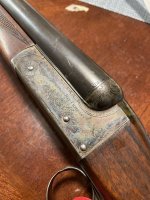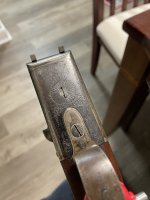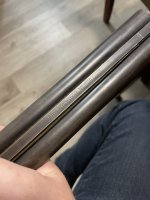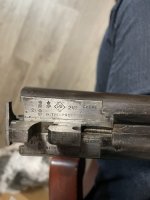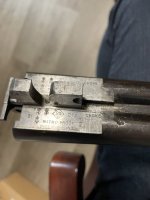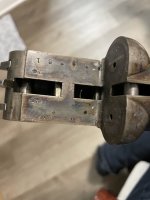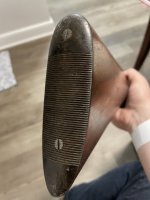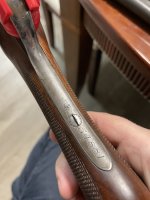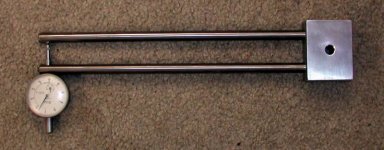Title says it all, really. I just bought an HBC Imperial No. 200. What can you tell me about it? Locks up tight, no rust, just normal wear for an old girl.
I know it says 2-1/2 chambers, but I set my bore gauge to .685 and it went almost exactly 3” deep. Safe to shoot normal, modern 20 out of?
Sure. Shoot modern ammo out of it. What could go wrong?
Well, here's a few things.
Whoever bored the chamber out to 3" did so excessively. At most it should have been 2 3/4" Now the question is to determine if it's unsafe. That starts by measuring the barrel wall thickness at the end of the new chamber. The most common reason lenghtening the chamber can create unsafe barrels is that the exterior of the barrels begin to taper while the new chamber does not. Thus thinning the barrel walls at the point of greatest pressure when you fire the gun. Barrel walls at chamber's end are typically .10" or more for a reason.
Without examining the proofs, hard to know if it was proofed for modern high pressure ammo (roughly 11,000 psi) or older lower pressure ammon (roughly 7,000 psi). How much do you like your eyes and fingers. Only you can decide what risk is worth while. If it was an American made gun, I'd be a little more chill about it. They tended to err on the sturdy side. Not necessarily so if English made. If it's English, best thing to do is compare the actual bore dimension to the bore dimension it was proofed at. If it's more than a .010 difference, you may have a problem.
How much do you like the stock? Do you want to have to repair or replace it? The most common cause of broken stocks in older guns is shooting modern ammo with modern recoil (sharp and fast compared to vintage ammo). The wood, dried out, pulling away from the action and concentrating the points of contact with the action into ever smaller areas, will give way. The only question is when.
When you say the chambers got reamed out to 3" it makes me concerned about what has been fired out of the gun. Was it regularly fed heavy recoiling 3" shells?
Frankly, I would have it inspected by a competent SxS gunsmith. Which is very different from a typically smith. Oh wait, you are in Winnipeg. I know from experience, there aren't any. Unless something has changed in the last 20 years. I wish you well with it. Could be a great gun. But could also not be a great gun. The biggest red flag to me from what you have posted is the 3" chambers. That indicates that previous owners didn't give a $hit about the gun. Or unknowingly turned it over to a gunsmith who didn't give a $hit about the gun. Probably had a line-up of scopes to mount and just wanted to get this old thing out of his shop.















































